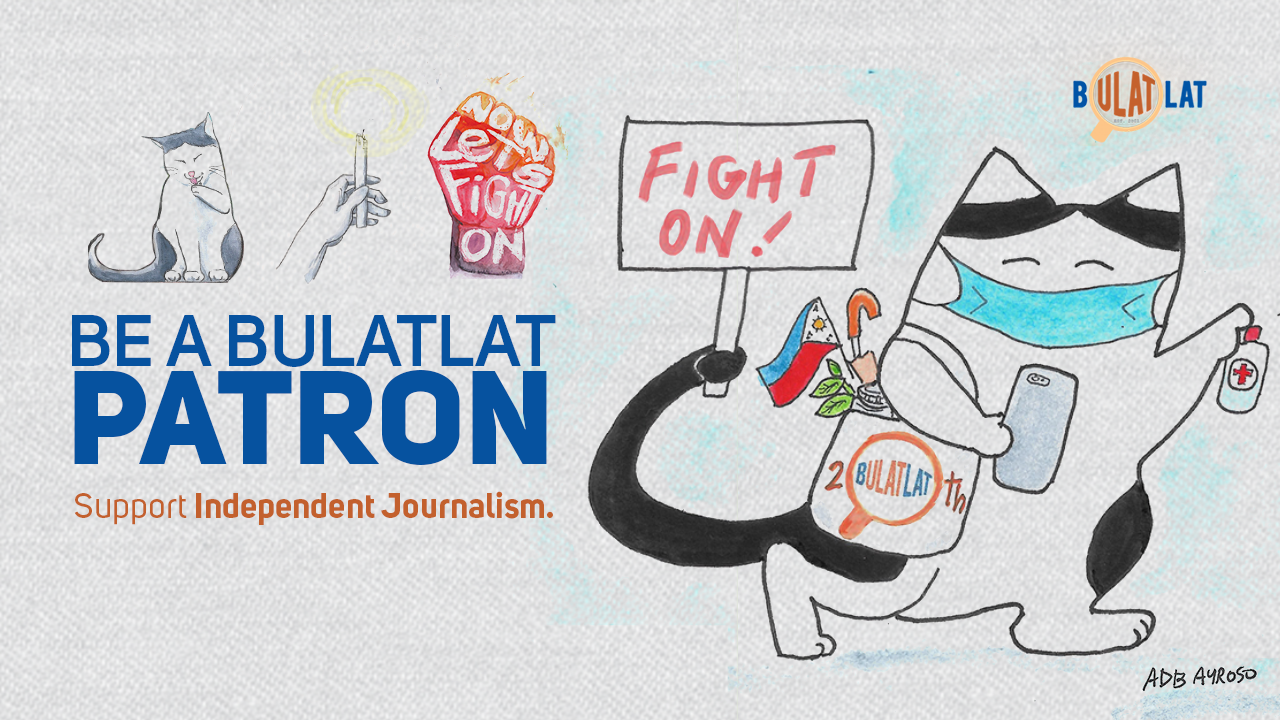
By ADORA FAYE DE VERA
Bulatlat.com
A father and his child dress up for a lunch date on Father’s Day. Just before going out, the father tells his child to wait a while because someone is calling him out for a short meet. At nine o’clock in the evening, a disappointed child, still in Sunday clothes, informs the mother that the father has not returned. A few weeks later, news spreads through the activist grapevine in Metro Manila that the military has secretly rounded up 21 community organizers, leftists, partisans, or whatever the government wants to call them (the term “red-tagging” not yet en vogue). Nineteen eventually turn up in prison and military facilities. Manuel Manaog and Geminiano Gualberto are not among them.
Their families, aided by human rights organizations, scour different military camps in Metro Manila. They go farther down to Southern Tagalog to pursue a radio news bulletin mentioning the arrest of the two in Quezon Province. The broadcaster cites a military press release as his source, which the military promptly denies issuing. At the camp, a family member sees Manaog’s picture on the wall with an “X” drawn over it.
Through time, as one lead after another turns into a dead end, the search loses its urgency. Meanwhile, Manaog’s nine-year-old son and Gualberto’s baby boy will have to grow up fatherless.
Manuel Manaog, son of a labandera and an ice buko vendor, worked his way through vocational school while helping his family as a construction worker, grocery bagger, or odd-jobber as only a poor student could. As “Nonie” or “Nonoy” to friends and family, however, he was a leader, first of the Kabataang Makabayan (KM) chapter in Bago Bantay, later as elected committee member of KM Quezon City-Marikina, then KM Southern Rizal and KM Manila Rizal region. Responding to the call for the youth to strike roots with the masses, he took part in trade union organizing in Marikina’s textile factories and Bicutan’s factory belt. When Martial Law was declared, he went on to reactivate KM Chapters in Laguna, Batangas, and Bicol, then went underground when the dictatorship made urban work too dangerous for activists. When the dictatorship was toppled by the combined strength of the people, he went back to community organizing among the urban poor. But forces who wanted the dictatorship to continue denied him the opportunity to enjoy even the slightest hint of freedom he willingly risked his life fighting for.
That was in 1990, in interesting times when various political forces were competing to restore their respective versions of peace and democracy. Hopes were high that state-sponsored torture, extrajudicial killings (EJKs), and involuntary disappearances would finally end, or at least decrease.
Sadly, it is obvious now whose version of so-called democracy prevailed. EJKs and involuntary disappearances have risen dramatically through the years, both in scope and absolute numbers to include not only red-tagged activists, but suspected drug users and batches -batches!- of sabungeros.
In primitive times, when a person disappears, his tribe would presume he had been eaten by wild beasts, fallen off a cliff, captured by another tribe, or taken by the spirits. If search parties fail to locate him, the babaylan will ask the diwatas or engkantos if they have taken the missing person’s body or spirit. The necessary rituals can then be performed according to circumstances or the person’s social status.
Today, no rituals are socially prescribed for desaparecidos. On the one hand, it would be unfair to consider dead someone who may be alive. On the other hand, it is harrowing for the family to experience without end the hopes and dashed hopes of every failed attempt at searching. There will be no necrological services, no memorials, but neither will there be family bonding. There is no catharsis of grief, no moving on. Just nagging questions. Is he being tortured? Is he still whole in body or mind? What could we all have done to prevent this? Are we doing enough to find him? And how can a mother explain away a child’s question, like how can such a big object as a living, loving father just disappear? This question will have an impact on his perception of the world, and his later years may find him being too clingy or obsessive, fearing things and people may suddenly disappear. Or he may refrain from deep personal relationships to avoid the pain of another an expected, unreasonable loss.
For families of desaparecidos, there may be no moving on. We cannot leave the disappeared behind. But there is healing, albeit very difficult. We do this by sharing our hopes and fears with each other, through collective remembrance and organized action. We answer the haunting questions by understanding the roots of the desaparecidos phenomenon and we respond with determined advocacy, so that other children, and other families will not have to go through what we were, and still are, forced to suffer.
Last Sunday, my son, Ronald Emmanuel (named after his father Manuel) spent his 33rd Fatherless Day. With remembrance. With action. ![]()


